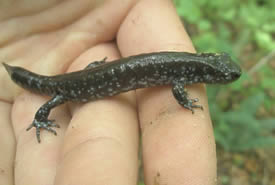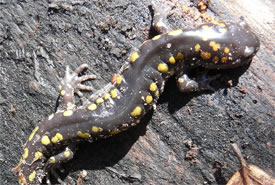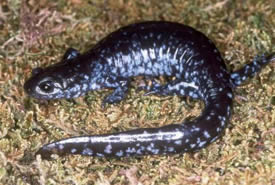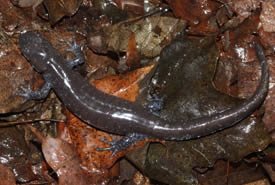Mole Salamander

Jefferson Salamander (Photo by Bernt Solymar)
Where does it reproduce?
When the snow begins to melt in early spring, mole salamanders migrate towards woodland ponds (vernal pools) to breed. They can travel up to 120 metres to their breeding ponds. In fact, mole salamanders often return to the ponds where they were born.
The seasonal nature of these breeding ponds (wet in the spring months and dry throughout the summer) ensure that no fish, which often eat mole salamander eggs and young, are present in the ponds when the eggs are laid.
How does this species reproduce?
Males line the bottom of the pond with spermatophores (capsules of sperm cells) that are picked up by the females to fertilize their eggs. The females lay masses of eggs around the pond edges, often on sticks, twigs or leaf matter. The eggs are laid in masses that range in size and are surrounded by a protective jelly.

Spotted Salamander (Photo by Bernt Solymar)
What are the threats to this species?
Spring migration can be dangerous for salamanders. They may have to cross roads or pathways to get to their breeding pools and can be run over by vehicles or bicycles.

Blue-spotted salamander (Photo by John Mitchell, Figment Films)
What is being done to help protect this species?
Efforts have been made locally and abroad to create eco-passages (wildlife tunnels) for these and other creatures to travel through, protecting them from road mortality.

Jefferson complex mole salamander (Photo by Mary Gartshore)
How can you help protect mole salamanders?
You can help local conservation organizations and biologists in their efforts to protect these unique creatures by reporting your amphibian sightings at Ontario's Reptile and Amphibian Atlas.
Supported by the Weston Family Foundation.




